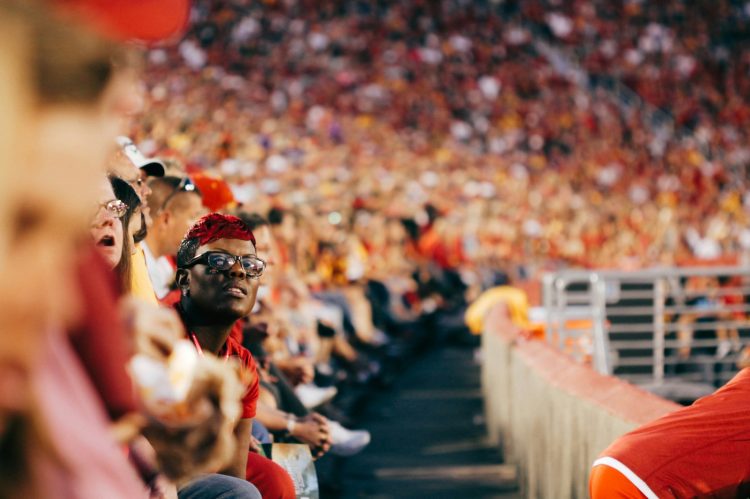There’s something about stepping into a stadium that no television screen can replicate. The hum of anticipation in the crowd, the blare of music echoing across the concrete, and the faint smell of popcorn and freshly cut grass—it all hits you at once. For millions of people around the world, attending a sports event is more than a pastime. It’s an experience. A ritual. Sometimes, even a memory that lasts a lifetime.
Sure, the final score is what makes headlines the next day, but ask anyone who’s ever been in the stands for a big game, and they’ll tell you: it’s about so much more than that. It’s about the emotions, the energy, the little moments that unfold in between plays. It’s about community, chaos, and sometimes even catharsis. And while the game may last only a few hours, the experience begins long before the first whistle and often lingers long after the lights go out.
So, what is it really like to attend a live sports event? To find the answer, you have to look past the scoreboard and into the heart of what makes these gatherings so unforgettable.
The Build-Up: A Ritual in Itself
The journey begins before you even leave the house. Whether you’re sporting a team jersey, painting your face, or just checking the weather to decide if you’ll need an extra layer, there’s a sense of preparation that builds excitement. For many, especially die-hard fans, game day has a rhythm to it. Meet up with friends, grab a pre-game bite, maybe have a drink or two. It’s a ritual that bonds people across generations and backgrounds.
For some fans, especially in smaller towns or communities with one beloved team, attending a game is akin to going to church. It’s sacred. The kind of thing that doesn’t get interrupted—birthdays, weddings, and even funerals are scheduled around the team’s calendar.
Arriving at the Venue: The First Rush
There’s a unique kind of buzz as you approach the stadium. Even if you’ve been there dozens of times, something about the flood of people, the colors, the noise—it gives you goosebumps. You might pass street performers or buskers playing team anthems, scalpers making last-minute offers, and food vendors shouting over each other to grab your attention.
Security lines can be long, especially for big matches, but there’s a shared sense of anticipation. You’re all in this together. Strangers high-five each other just because they’re wearing the same colors. Everyone is friendly, loud, and slightly on edge—in the best way possible.
Then you walk through the gates, and the stadium opens up before you like a massive amphitheater of emotion. Whether it’s a 100-year-old arena or a brand-new, high-tech facility, that first glimpse of the field, court, or pitch makes your pulse quicken. The field looks greener, the seats brighter, and the lights more intense in person. It’s like walking into a different world.
The Crowd: A Living, Breathing Organism
If the players are the body of the sport, the crowd is undoubtedly the soul. Live sports are a communal experience, and the crowd is the driving force behind the atmosphere. From the roar after a goal to the collective groan of a missed chance, there’s an almost electric energy that pulses through the stands.
What makes live sports truly special is how individual emotion merges into collective expression. One person’s scream becomes part of a chant. One row’s excitement becomes a wave of applause that ripples around the entire stadium. And in those moments, you’re not just watching a game—you’re part of it.
Different sports have different cultures, of course. Soccer (football) fans may chant and sing for the entire 90 minutes. American football tailgaters bring the party to the parking lot. Baseball games have a slower rhythm, but moments like a home run can bring the crowd to its feet in a split second.
Then there are the superstitions—fans wearing the same “lucky” socks, routines like clapping a certain number of times or yelling the same phrase after each play. These quirks create a deeply personal connection to the event, and being surrounded by thousands of others doing the same thing makes it all the more meaningful.
The Unexpected Moments: Magic Between the Plays
While the highlight reel will show the touchdowns, slam dunks, or penalty kicks, some of the most memorable moments come during the in-between. The jumbotron kisses. The kid who catches a foul ball and bursts into tears. The mascot breakdancing at halftime. The elderly couple dancing in the aisle during a timeout. These are the kinds of things that no streaming service can deliver.
There’s also something to be said for the imperfections of live sport. The botched play, the controversial call, or the last-second drama that unfolds unscripted. It’s raw. It’s real. And because you were there, you feel a personal claim to the story that unfolds.
Concessions and Culture
Yes, stadium food is expensive. But somehow, that hot dog, nachos, or cold beer tastes different in the stands. Part of it is the setting; part of it is tradition. You don’t just buy food—you’re partaking in the full experience.
And in recent years, stadiums have upped their game. Gourmet food trucks, locally sourced beers, and vegan options are now part of the norm in many places. This infusion of local flavor turns a simple concession stand into a reflection of the city’s culture.
You’re not just consuming a game—you’re engaging with a place and its people. For visitors, it’s one of the best ways to feel the heartbeat of a city.
The Climax: Moments That Take Your Breath Away
Whether it’s a buzzer-beater, a last-minute goal, or a record-breaking performance, there’s a kind of magic when something spectacular happens live. You feel it in your bones. The collective intake of breath, the split second of silence, and then—eruption. Joy, disbelief, heartbreak—all of it plays out like a symphony of emotion. You scream not just with your mouth but with your whole body.
And when your team wins? There’s nothing like it. Strangers hug. Tears fall. Anthems are sung with cracked voices and full hearts.
When your team loses, though, there’s also something powerful in the shared grief. The silence. The slow shuffle to the exits. The soft, resigned humor of fans already talking about “next year.” There’s beauty even in the loss, because it’s experienced together.
After the Final Whistle: Echoes That Linger
As the crowd files out and the stadium begins to empty, there’s a unique stillness that sets in. Your ears ring slightly. Your voice might be gone. But your heart is full.
The streets are crowded again, this time with a different energy—relief, elation, or frustration. Fans dissect every moment of the game, sometimes with strangers. The post-game recap plays in cars and bars. And as you head home, there’s this satisfying exhaustion, like you’ve just come back from a whirlwind trip.
The game may be over, but the experience follows you. You’ll replay it in your head, retell it to friends, and maybe—just maybe—start planning for the next one.





